This was not planned. I have been buying two categories of books that are interesting - possibly not very profound - just out of curiosity. One set pertains to books set in undivided India/Pakistan set around the partition time, but--- but not about violence. They are not of the Saadat Hasan Manto type, nor have the ripples of Train to Pakistan. I will write about them sometime later. The other set I have been buying are books set in Hyderabad. I have always been fascinated by the history of Hyderabad State and I really like the city and will never miss a chance to go there and hang out. I have also been reading up a lot on Hyderabad and its history for the past fifteen years or so. Naturally when I see a book (even if it is fiction) that claims to come from Hyderabad I cannot resist myself. In the past 3-4 months I picked up and read three different books, distinct in style and varied in themes, but all set in Hyderabad. I will talk about them in chronological order of their setting (which incidentally was also the order in which I read them).
The first book is Zohra by Zeenuth Futhehally - set in the first part of the twentieth century.
 This book was first published in 1951 and re-issued by Oxford University Press in 2004, the current edition has been edited by her daughter - Rummana. I picked it up after I read a review which said that this was an old book re-issued. I thought if OUP was publishing fiction, and that too re-issuing an old book it indeed must be exciting and different. So when I was roaming around in Jaipur I suddenly found an OUP outlet (I had least expected OUP to have a showroom in Jaipur!) and asked for the book. Given that I had put in extra efforts to procure the book, I also had extra expectations.
This book was first published in 1951 and re-issued by Oxford University Press in 2004, the current edition has been edited by her daughter - Rummana. I picked it up after I read a review which said that this was an old book re-issued. I thought if OUP was publishing fiction, and that too re-issuing an old book it indeed must be exciting and different. So when I was roaming around in Jaipur I suddenly found an OUP outlet (I had least expected OUP to have a showroom in Jaipur!) and asked for the book. Given that I had put in extra efforts to procure the book, I also had extra expectations.There is a certain element of aristocracy in this book and of course it comes with its own limitations. But this is one side of the world that has not received due attention because one could consider the things that Zohra has to grapple with as "vanity". Is this just a story of a partly and frustrated housewife? But one scratches the surface to find that there is a life behind a purdah, there are ways in which people let their hair down and while people could exercise control over their body due to social customs, it is extremely difficult to exercise control over the mind.
The story is important only because of the setting. This is set around the time of Indian freedom struggle (Gandhiji is refered to and Sarojini Naidu makes an appearnce in Hyderabad to recite poetry) - and therefore the concerns and issues that flow through the novel represent the times. The story starts with Zohra's marriage to Bashir. On the face of it, it is a happy marriage and possibly this would have continued that way if certain people had not come into Zohra's life. The first incident happens when Bashir and Zohra are on honeymoon in Mussorrie where they meet one of Bashir's old friends and through him a young man - Siraj. Siraj is young unmarried and Zohra finds him interesting. She has to really let go of the boredom of the household - she has been in purdah all the while and the only let up is when they move out of Hyderabad. At the same time, Zohra cannot go wholehog. She has to have these diversions to satisfy her intellectual frustration. With the Mussorrie honeymoon ending, Siraj disappears into oblivion.
On return to Hyderabad the Bashir's brother Hamid appears on the scene with his part leftist and part nationalist orientation. He has an ear for poetry, loves books, and does not have a regular job. For Zohra it is a welcome change to chat up with Hamid. Bashir is generally absorbed in work and not a great company to keep. Zohra gradually figures out that she has fallen in love with Hamid, her own brother-in-law. Well the tradition of story telling demands that such conflicts should not persist for long - he has to disappear from the scene - and so he does. In between on a vacation in Europe Zohra discovers a friend in Jacques who teaches her dance, but soon they separate as Jacques tries to make some advances towards her. Zohra wants to talk, flirt, but would not have sex with anybody else. Well the story goes on ultimately to end in a blissful death of Zohra.
I really do not think the story is great - what it just illustrates is the two different worlds that Zohra lived in. In camera - purdah when she was in Hyderabad, and a big release when she was out. She is constantly looking for some intellectual companionship which Bashir cannot provide. While she finds nothing wrong with Bashir, her quest is to move beyond the veil and that solace she seems to find in her conversations with others - she seamlessly lives in two worlds without feeling guilty about it. There is a certain element of magnanimity that we see from Bashir, while there are some petty issues within the family. The point is that wedding is not a one stop shop where one finds all solutions. The layers it unfolds in the context of the pre-independence Hyderabadi aristocratic society which is trying to break shackles and westernise but at the same time cannot give up tradition is the most interesting part of the book. The narration is simple and conservative and there was nothing in the book that got me very excited.
Soon after I had finished this I picked up a copy of Aminuddin Khan's  book A Shift in the Wind from Walden in Hyderabad. This is again set in the backdrop of Hyderabadi aristocracy, but makes a shift to the post-independence decade. The novel has several characters narrating incindents which add up to a story. The story revolves around Zafar and the world around him. The relationships that evolve in this book are quite distinct. This is a much more liberal society, people are a bit more open and curious things happen.
book A Shift in the Wind from Walden in Hyderabad. This is again set in the backdrop of Hyderabadi aristocracy, but makes a shift to the post-independence decade. The novel has several characters narrating incindents which add up to a story. The story revolves around Zafar and the world around him. The relationships that evolve in this book are quite distinct. This is a much more liberal society, people are a bit more open and curious things happen.
Zafar encounters three women at different points in time - first he meets Sabrina - who is older than him and married to a much older Dr. Merchant - he even wants to marry her but she is unwilling to break the earlier wedding. As he is trying to overcome this relationship he comes in contact with Asma who has been offered to him for a night. She sells herself in order to study and ultimately set up a school. Zafar does not have sex with her, offers her money, which like in any hindi movie, she refuses. After that encounter, she disappears from the scene. And while Asma does not show interest in his money does show interest in Zafar himself, but he is not in a mood. Then Zafar marries Zeba. If the story ends here, it would have been a whimper - so Asma reppears as somebody who has already set up her own school. Sabrina re-appears wanting to marry Zafar. But it is too late. An interesting twist in the tale is that Zeba's father falls in love in Asma. That conflict has to be handled because Asma is not interested...... and eventually Sabrina loses memory.
relationship he comes in contact with Asma who has been offered to him for a night. She sells herself in order to study and ultimately set up a school. Zafar does not have sex with her, offers her money, which like in any hindi movie, she refuses. After that encounter, she disappears from the scene. And while Asma does not show interest in his money does show interest in Zafar himself, but he is not in a mood. Then Zafar marries Zeba. If the story ends here, it would have been a whimper - so Asma reppears as somebody who has already set up her own school. Sabrina re-appears wanting to marry Zafar. But it is too late. An interesting twist in the tale is that Zeba's father falls in love in Asma. That conflict has to be handled because Asma is not interested...... and eventually Sabrina loses memory.
 book A Shift in the Wind from Walden in Hyderabad. This is again set in the backdrop of Hyderabadi aristocracy, but makes a shift to the post-independence decade. The novel has several characters narrating incindents which add up to a story. The story revolves around Zafar and the world around him. The relationships that evolve in this book are quite distinct. This is a much more liberal society, people are a bit more open and curious things happen.
book A Shift in the Wind from Walden in Hyderabad. This is again set in the backdrop of Hyderabadi aristocracy, but makes a shift to the post-independence decade. The novel has several characters narrating incindents which add up to a story. The story revolves around Zafar and the world around him. The relationships that evolve in this book are quite distinct. This is a much more liberal society, people are a bit more open and curious things happen.Zafar encounters three women at different points in time - first he meets Sabrina - who is older than him and married to a much older Dr. Merchant - he even wants to marry her but she is unwilling to break the earlier wedding. As he is trying to overcome this
 relationship he comes in contact with Asma who has been offered to him for a night. She sells herself in order to study and ultimately set up a school. Zafar does not have sex with her, offers her money, which like in any hindi movie, she refuses. After that encounter, she disappears from the scene. And while Asma does not show interest in his money does show interest in Zafar himself, but he is not in a mood. Then Zafar marries Zeba. If the story ends here, it would have been a whimper - so Asma reppears as somebody who has already set up her own school. Sabrina re-appears wanting to marry Zafar. But it is too late. An interesting twist in the tale is that Zeba's father falls in love in Asma. That conflict has to be handled because Asma is not interested...... and eventually Sabrina loses memory.
relationship he comes in contact with Asma who has been offered to him for a night. She sells herself in order to study and ultimately set up a school. Zafar does not have sex with her, offers her money, which like in any hindi movie, she refuses. After that encounter, she disappears from the scene. And while Asma does not show interest in his money does show interest in Zafar himself, but he is not in a mood. Then Zafar marries Zeba. If the story ends here, it would have been a whimper - so Asma reppears as somebody who has already set up her own school. Sabrina re-appears wanting to marry Zafar. But it is too late. An interesting twist in the tale is that Zeba's father falls in love in Asma. That conflict has to be handled because Asma is not interested...... and eventually Sabrina loses memory.Obviously the novel is very ordinary and nothing much to write home about, but we can see that the Hyderabadi society has moved from the concerns of purdah to a bit more liberal setting. In its orientation and presentation it is very very contemporary.
The novel treats the decade of 50s and 60s as a capsule. There are no problems with the integration of the Hyderabad state with the Indian Union, the politics of the time does not exist and the characters continue to do business in their own small aristocratic world. Having read a lot about police action, telangana peoples' movement and the tension that went on with the integration of Hyderabad state it was refreshing to read about something totally different. But it is amazing that when there is a big agitation led by Potti Sriramulu for integration of Hyderabad and the formation of Andhra on the basis of language, these novels stand as an island, totally warped inside the small lives of the aristocracy. Like Zohra makes a mention of Gandhi and Sarojini Naidu, this novel does make a mention of the police action - in order to determine somebody's age.
While I was wondering if all novels that come out of the Hyderabadi setting are so blissful,
 I encountered a third one. This is much more recent and deceptively titled Madras on Rainy Days by Samina Ali. Actually the novel has nothing to do with Madras or Rains. This is another Hyderabadi novel that I picked up at Sankar's in Bangalore Airport. The author thankfully does not claim an aristocratic lineage (unlike the other two) and the novel is set in more contemporary times around the 1990s. This book has a bit more of a connect with reality and again explores several layers of relationships. While Chitra Divakaruni says that it is "a story filled with psychological insight and a deep understanding of conflicts that plagues all ofus who inhabit two worlds"
I encountered a third one. This is much more recent and deceptively titled Madras on Rainy Days by Samina Ali. Actually the novel has nothing to do with Madras or Rains. This is another Hyderabadi novel that I picked up at Sankar's in Bangalore Airport. The author thankfully does not claim an aristocratic lineage (unlike the other two) and the novel is set in more contemporary times around the 1990s. This book has a bit more of a connect with reality and again explores several layers of relationships. While Chitra Divakaruni says that it is "a story filled with psychological insight and a deep understanding of conflicts that plagues all ofus who inhabit two worlds"  I myself am not sure of the psychological insights part. As I said in my earlier post, it would be foolhardy to buy books based on the superlatives on the blurb. They are meant to entice us into buying the books. But unlike the earlier two books, this is not very inane and makes a greater attempt at exploring relationships, and looking at the Hyderabadi culture from the perspective of someone who is an ABCD.
I myself am not sure of the psychological insights part. As I said in my earlier post, it would be foolhardy to buy books based on the superlatives on the blurb. They are meant to entice us into buying the books. But unlike the earlier two books, this is not very inane and makes a greater attempt at exploring relationships, and looking at the Hyderabadi culture from the perspective of someone who is an ABCD.This one is all about Layla - who grows up in US and comes back to India for an "Arranged Marriage". Her father has given up her mother for another woman. Layla appears to be wanting to defy tradition. She has already had an affair with Nate but does not want to continue with the relationship because she finds his letters extremely
 distasteful. At the same time she is not too keen to marry Sameer and her mother thinks she is possessed and takes her to an Alim to rid her of "bad thoughts" - the Alim seems to show remarkable maturity in dealing with her. (It is not clear if he figures out the truth, but I did get the idea that he had figured it out). But does Layla have a choice other than marry Sameer? Possibly no. Well she decides to start life on a clean slate by telling Sameer all about the past. Sameer looks compromising, forgiving and willing to move on. He just wants to get out of Hyderabad and move to US. Indeed the trip to Madras is not only a honeymoon, but also a mission to get a visa.
distasteful. At the same time she is not too keen to marry Sameer and her mother thinks she is possessed and takes her to an Alim to rid her of "bad thoughts" - the Alim seems to show remarkable maturity in dealing with her. (It is not clear if he figures out the truth, but I did get the idea that he had figured it out). But does Layla have a choice other than marry Sameer? Possibly no. Well she decides to start life on a clean slate by telling Sameer all about the past. Sameer looks compromising, forgiving and willing to move on. He just wants to get out of Hyderabad and move to US. Indeed the trip to Madras is not only a honeymoon, but also a mission to get a visa.Just when it appears things have somewhat settled down, and they are out on a honeymoon in Madras, it rains. Actually it pours. So on a rainy day while
 their marriage is not yet consummated she finds out that Sameer is a gay! What a twist in the tale! There appears another Alim in Madras to whom Layla meekly submits herself to exorcise the ghosts that are haunting her. From the time they return a complex game of relationship starts. The marriage appears to be off at some point, it appears to get reconstructed and the pendulum goes on infinitely. Samina Ali in trying to delve deep into the minds somewhere loses the plot. She is not sure if the details of Hyderabad, the communal riots and the culture of the city is important, or examining the relationships are important. She keeps weaving the story larger and larger with more and more complications setting in. No wonder she has to seek refuge in a communal riot and get rid of a few people to get the tale under some control. But unlike the other two novels, there is an earnest attempt to look at the tension between the old and the new city, the distinct identity of the old city and the culture of Hyderabad. Given that Futehally and Khan lived their lifetime in Hyderabad and Ali has been shuttling between India and US, it appears that she is able to capture the spirit of the city much better. She is rich and authentic in details and that is what makes this novel readable for someone like me who has a passion for Hyderabad.
their marriage is not yet consummated she finds out that Sameer is a gay! What a twist in the tale! There appears another Alim in Madras to whom Layla meekly submits herself to exorcise the ghosts that are haunting her. From the time they return a complex game of relationship starts. The marriage appears to be off at some point, it appears to get reconstructed and the pendulum goes on infinitely. Samina Ali in trying to delve deep into the minds somewhere loses the plot. She is not sure if the details of Hyderabad, the communal riots and the culture of the city is important, or examining the relationships are important. She keeps weaving the story larger and larger with more and more complications setting in. No wonder she has to seek refuge in a communal riot and get rid of a few people to get the tale under some control. But unlike the other two novels, there is an earnest attempt to look at the tension between the old and the new city, the distinct identity of the old city and the culture of Hyderabad. Given that Futehally and Khan lived their lifetime in Hyderabad and Ali has been shuttling between India and US, it appears that she is able to capture the spirit of the city much better. She is rich and authentic in details and that is what makes this novel readable for someone like me who has a passion for Hyderabad.While each of these are very ordinary books and independently would not have deserved a post, I was fascinated when I looked at the chronology and how these represented almost half a century of relationships - written be three totally different individuals and all coming from the upper crust of Hyderabad. It is a fascinating journey in time - from issues of getting out of the veil to having bold and mature relationships to a novel where the characters do not mind having oral sex, being gay - but at the same time get traumatised when the relationships lack aesthetics.
It is also important to see how each of these novels have been launched. I had to really go in search of Zohra - it was almost like an academic book, not announced in the new arrivals of the Crosswords, not available in Airport Bookshops. A Shift in the Wind was a bit more widely available, there was an interview with the author in Hindu and a couple of reviews appeared. However, this was an Indian book with an Indian launch. In case of Madras on Rainy Days, we can see that it has had a global launch, different covers in different places, reading and signing sessions and also shortlisted for a local prize in California.
If you are a writer, where would you want to be?
Cross posted in Kannada on ಕನ್ನಡವೇ ನಿತ್ಯ






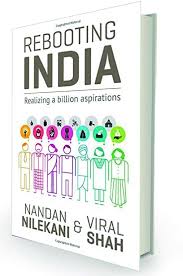








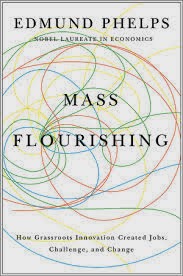









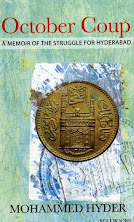

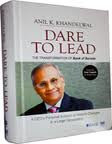
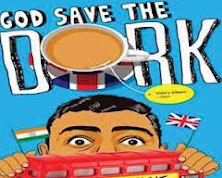








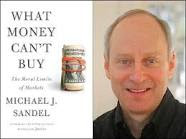


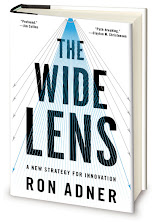

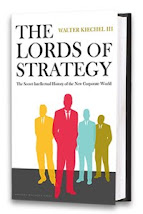











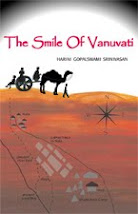


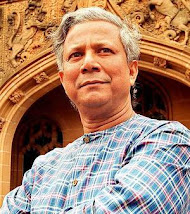
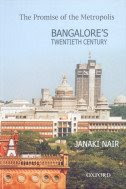




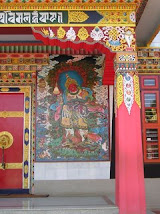
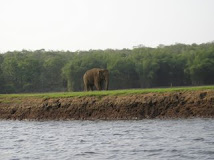

![Hyderabad: A Book [or two] and A Movie](http://3.bp.blogspot.com/_mxWA9ZVkKhQ/S0vnLAO90CI/AAAAAAAABYM/WgbSbAcAaEk/S214/luther1.0.jpg)

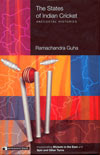





![Two Lives [and this is not about Vikram Seth]](http://1.bp.blogspot.com/_mxWA9ZVkKhQ/S0vjkyDYRvI/AAAAAAAABXM/mJGK-_gZiNg/S214/mansur.jpg)





14 comments:
There is a book by, I think, Vanaja Banagiri (she's written only one, she's the ex-editor of Hyderabad Times), which is also interesting. I found some more on a Hyderabad guide. Notably, an Aminuddin Khan (A Way Through The Woods).
A book in marathi on Hyderabad history with rare mentions was launched yesterday by its Author Gajanan Pole in Hyderabad India..Those interested can email to polearun@yahoo.com
I have read Aminuddin Khan's The way Through the Woods, and Shift in the Wind, Both are remarkable stories, and well written with Hyderabadi Tahzeeb. is for Adults & Mature reader .
my recomendation for reads
regards
Azim.musafirs
Hello all, a new book for Hyderabadi lovers. I have penned down the book " Hyderabad the Nawabi City on the move ", based on my experiences as journalist for close to two decades.If anybody is interested in this, please mail me at ifthekharjs@gmail.com.
Hi Nice Post,For More Updates
Best ENT clinic in Manikonda
TABLE MATE is a finest quality multipurpose table furniture for your home that can be used for eating, using as a laptop stand, study desk, reading, writing, drawing, arts and craft, board games, as an outdoor tray table, trade shows, gardening, patio tray table, serving tray table etc. Table mate is an advantageous advent that can be used for both indoor and outdoor activities. It is an ultimate adjustable and portable folding table that slides right up to your body and provide optimum support for doing your work.
Salient Features:
1) Sliding Cupholder
2) Strong Plastic
3) Complete single color
4) 6 level height adjustment
5) 3 level slant adjustment
6) Detachable and Foldable
7) Takes 2 minute assemble without any tools or fasteners
8) Spares available
For Buy 1 Get 1 Offer @ Rs. 2,299/ Call To Order By Phone 98499 90968
Proudly Made in India with 3 Times stronger than china tables shown in TV ads
Protable and Adjustable height at 6 levels and 3 Sliding adjustments
Better useful as Laptop Table, Dinner Table and Study Table
Takes 2 minute assemble without any tools or fasteners
Heavy and Stronger than the one shown in TV ads
TABLE MATE is a finest quality multipurpose table furniture for your home that can be used for eating, using as a laptop stand, study desk, reading, writing, drawing, arts and craft, board games, as an outdoor tray table, trade shows, gardening, patio tray table, serving tray table etc. Table mate is an advantageous advent that can be used for both indoor and outdoor activities. It is an ultimate adjustable and portable folding table that slides right up to your body and provide optimum support for doing your work.
TABLE MATE is a finest quality multipurpose table furniture for your home that can be used for eating, using as a laptop stand, study desk, reading, writing, drawing, arts and craft, board games, as an outdoor tray table, trade shows, gardening, patio tray table, serving tray table etc. Table mate is an advantageous advent that can be used for both indoor and outdoor activities. It is an ultimate adjustable and portable folding table that slides right up to your body and provide optimum support for doing your work.TABLE MATE Now Available In Banglore.
TABLE MATE is a finest quality multipurpose table furniture for your home that can be used for eating, using as a laptop stand, study desk, reading, writing, drawing, arts and craft, board games, as an outdoor tray table, trade shows, gardening, patio tray table, serving tray table etc. Table mate is an advantageous advent that can be used for both indoor and outdoor activities. It is an ultimate adjustable and portable folding table that slides right up to your body and provide optimum support for doing your work. The Best price table mate in Chennai
Small Space Saver :
Surely our ceiling hanger system is easy to fit in small balconies and utility areas also. we can customize our ceiling hanger system according to your requirement.
Free Installation:
Its Really Free installation of best ceiling cloth hanger to our customers. No hidden Chargers.
Available in Ready-Made Sizes:
EverDry cloth drying ceiling system is available in ready-made sizes of 4 feet, 5 feet, 6 feet, 7 feet, and 8 feet with 6 rods per each set, including two wheel patties and one stopper to hold the thread.
Choosing the right school is one of the most important decisions that you as a parent can take in your child’s life. From the first step to leaving school with confidence and competence of an intellectually stimulating career – Silver Oaks can make all the difference.
Mission
To integrate into teaching and learning, the goals for conservation and social justice; To develop civic virtues and emotional skills that can empower our acorns to be icons of personal and social change who will play leading roles in the transition to a sustainable future.
Post a Comment